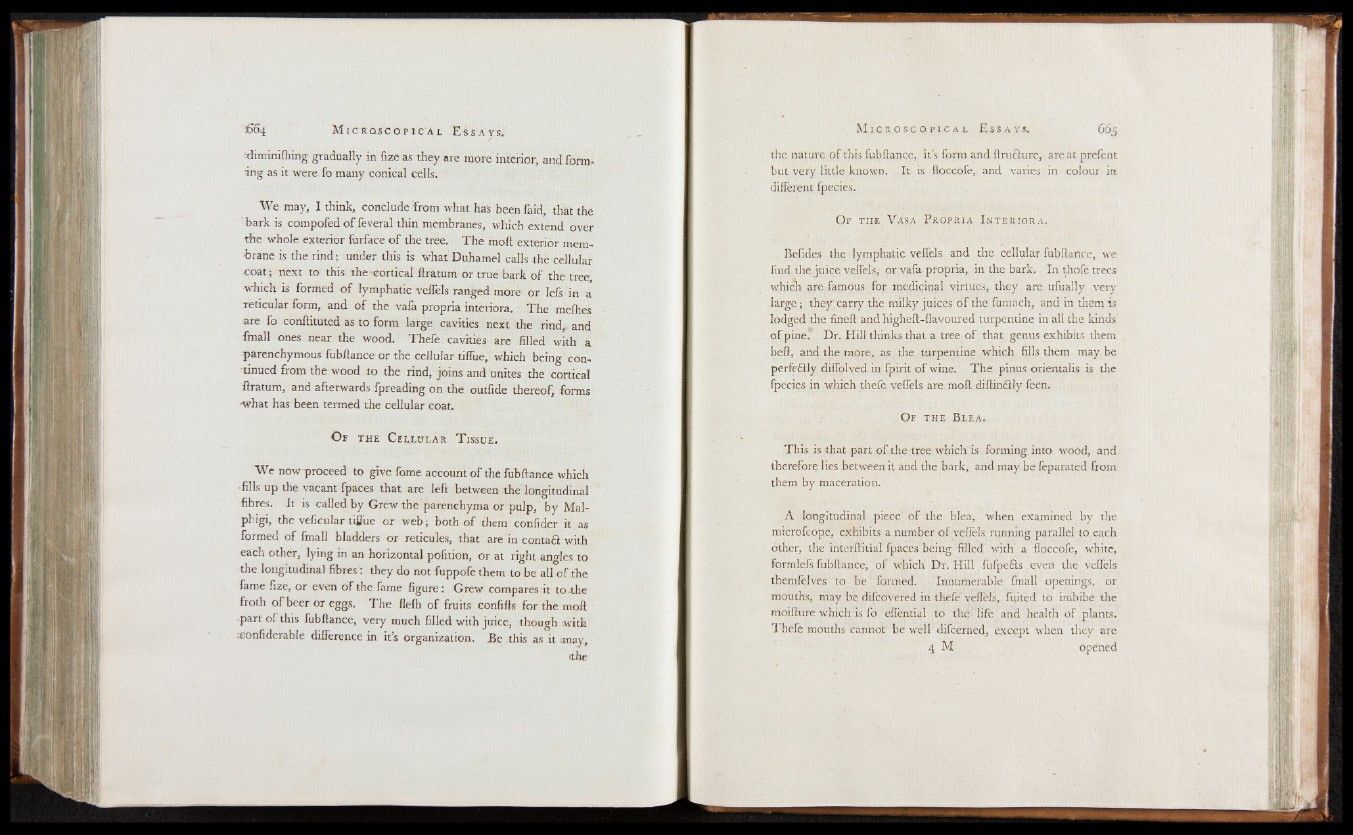
Thminifhing gradually in fize as they are more interior, and forming
as it were fo many conical cells.
We may, I think, conclude from what has been faid, that the
bark is compofed o f feveral thin membranes, which extend over
the whole exterior farface o f the tree. The moft exterior membrane
is the rind; under this is what Duhamel calls the cellular
coat ; n ex t to this the cortical ftratum or true bark o f the tree
which is formed o f lymphatic veffels ranged more or lefs in a*
xeticular form, and o f the vafa propria interiora. The mefhes
are fo conftituted as to form large cavities next the rind,, and
fmall ones near the wood. Thefe cavities are filled with a
parenchymous fubftance or the cellular tiffue, which being continued
from the wood to the rind, joins and unites the cortical
ftratum, and afterwards fpreading on the outfide thereof^ forms
■ what has been termed the cellular coat.
O f the C ellular T issue.
W e now-proceed to give fome account o f the fubftance which
•fills up the vacant fpaces that are left between the longitudinal
fibres. It is called by Grew the parenchyma or pulp, by Mal-
pbigi, the veficular tifiiie or web; both o f them confider it as
formed o f fmall bladders or reticules, that are in contadl with
each other, lying in an horizontal pofition, or at right an<des to
the longitudinal fibres : they do not fuppofe them to be all o f the
fame fize, or even of the fame figure: Grew compares it to .the
froth o f beer or eggs. The flefh o f fruits confifts for the moft
•part of this fubftance, very much filled with juice, though .with
tconfiderable difference in it’s organization, Be this as it imay,
«the
the nature of this fubftance, it’s form and flruclure, are at prefent
but very little known. It is floccofe, and varies in colour in
different fpecies.
O f the V asa Propria In teriora.
Befides the lymphatic veffels and the cellular fubftance, we
find the juice veffels, or vafa propria, in the bark. In thofe trees
which are famous for medicinal virtues, they are ufually very
large ; they carry the milky juices of the fumach, and in them is
lodged the fineft and higheft-flavoured turpentine in all the kinds
o f pine. Dr. Hill thin ks that a tree o f that genus exhibits them
heft, and the more, as the turpentine which fills them maybe
perfeftly diffolved in fpirit of wine. The pinus orientalis is the
fpecies in which thefe veffels are moft diftindly feen.
O f the Blea.
This is that part of the tree which is forming into wood, and
therefore lies between it and the bark, and may be feparated from
them by maceration.
A longitudinal piece of the blea, when examined by the
microfcope, exhibits a number o f veflels running parallel to each
other, the interftitial fpaces being filled with a floccofe, white,
formlefs fubftance, o f which Dr. Hill fufpeHs even the veffels
themfelves to be formed. Innumerable fmall openings, or
mouths, may be difcovered in thefe veflels, fuited to imbibe the
mqifture which'is fo eilential to the life and health of plants.
Thefe mouths cannot be well difcerned, except when they are
4 M opened